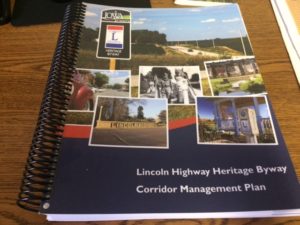The world of Byways changed on September 22, 2019 when “Reviving America’s Scenic Byways Act of 2019” was signed into law. It passed out of the U.S House of Representatives on a vote of 404-19 earlier this year and then was passed unanimously in the Senate. The President signed it on 9/22/19. The bill directs the U.S. Secretary of Transportation to restart the nomination process for National Scenic Byway status within 90 days of enactment, and to make a round of designations within one year.We are very grateful to Sen. Susan Collins (R-ME) and Sen. Ben Cardin (D-MD) for their leadership on the bill in the Senate and to Rep. David Cicilline (D-RI) and Rep. Garret Graves (R-LA) for their leadership in the House. See what other groups have to say about the passage of this bill and what it means for America at https://www.scenic.org/blog/president-signs-national-scenic-byways-bill-into-law/
We, at the Lincoln Highway Heritage Byway, are patiently waiting to see what the guidelines and nomination requirements are for this re-energized program. Only in Illinois is the Lincoln Highway a National Scenic Byway. The route in the states of Nebraska, Iowa, Indiana, Ohio, and half of Pennsylvania are state byways. The other states (New York, New Jersey, West Virginia, Wyoming, Utah, Nevada, and California) have not designated their portion of the historic route as a byway. One must first be a state byway before becoming a national byway.
In Iowa, we have two National Scenic Byways- the Loess Hills National Scenic Byway and the Great River Road National Scenic Byway. The Loess Hills runs along the western edge of the state and the Great River Road is along the Mississippi River on the eastern edge of Iowa. The Lincoln Highway connects to both of them.
Now keep in mind that no funding was attached to this bill. This is only to take nominations and approve byways for this distinction. That does not mean that funding couldn’t happen in the future, but it was not part of this bill.
A Corridor Management Plan has been a requirement in the past. We completed ours in late 2016 and have been working hard to implement the projects identified in that process. Twenty interpretive panels in 8 communities have been created and we have plans for several more. The rou te has also been promoted in brochures, presentations, and at the Iowa State Fair. We have partnered with universities, government entities, other non-profits, and citizens to retain this historic road and its varied resources.
te has also been promoted in brochures, presentations, and at the Iowa State Fair. We have partnered with universities, government entities, other non-profits, and citizens to retain this historic road and its varied resources.
As we keep the momentum going, writing grants and planning projects, we desire to become a National Scenic Byway one day. We see the possibility on the horizon.
